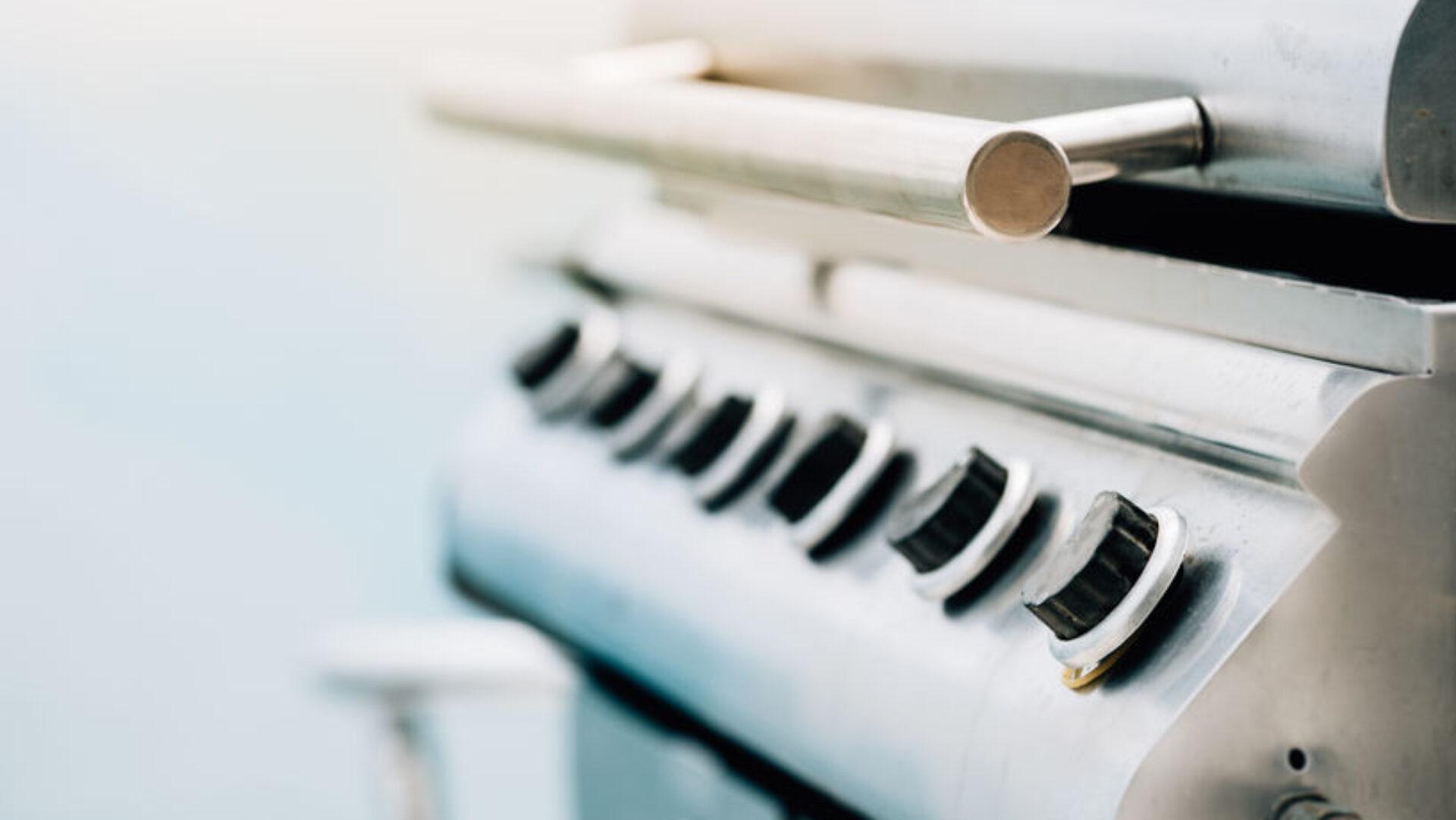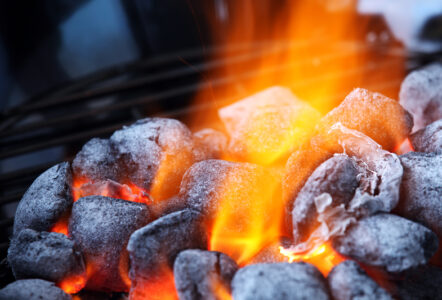 Charcoal is a staple in many households, especially for barbecues and grilling.
Charcoal is a staple in many households, especially for barbecues and grilling.
Many people wonder if it can go bad, leading to questions about its longevity and best storage practices.
Charcoal does not have an expiration date in the traditional sense, but its effectiveness can diminish over time if not stored properly.
The proper storage conditions play a crucial role in maintaining the quality of charcoal.
If kept in a dry, cool place and sealed in an airtight container, it can last for several years without losing its ability to ignite and burn effectively.
Exposure to moisture and air can lead to clumping and reduce its performance, making storage considerations essential for those who want to maximize its lifespan.
Understanding how to properly care for charcoal ensures that it performs well when needed.
By implementing the right storage techniques, users can enjoy consistent results on the grill or in their fire pits, ready to create delicious meals and memorable gatherings.
What Is Charcoal?

Charcoal is a black carbonaceous material produced by the incomplete combustion of organic matter. It serves various purposes, especially in cooking and as a fuel source.
The following subsections cover its origins, types, common uses, and additives that enhance its performance.
Origins and Types
Charcoal has been used for centuries, originating in various cultures as a means of producing heat and cooking food.
The primary fuel source for charcoal is organic matter, typically wood.
Common types include:
- Lump Charcoal: Made from pure wood, offering a clean burn and high heat. It ignites quickly but may burn unevenly.
- Briquettes: Compressed charcoal pieces often contain additives to improve ignition and burn time. They provide a consistent heat source.
- Binchotan: A high-quality, Japanese charcoal made from oak, known for its long-lasting and clean-burning properties.
- Coconut Shell Charcoal: Created from coconut shells, it burns hot and is often used in specialty cooking.
Common Uses
Charcoal is widely utilized in outdoor cooking, grilling, and smoking.
Its ability to produce high temperatures makes it ideal for these applications.
In grilling, it imparts a distinct flavor to food.
Some specific uses include:
- Barbecuing: Charcoal is a primary fuel for many outdoor grills, providing the necessary heat for cooking meat and vegetables.
- Smoking: It is popular in smoking foods, where the smoke from burning charcoal adds rich flavors to fish, meats, and cheese.
Charcoal Additives
Many charcoal products include additives to enhance their performance.
These additives can vary in purpose and effect.
Common types include:
- Match-Light Charcoal: Pre-treated with lighter fluids for easy lighting, making it convenient for quick barbecues.
- Binders and Fillers: Used in briquettes to help maintain shape and provide consistent burn rates.
These additives can affect the flavor of foods cooked over charcoal, so understanding their composition is essential for those concerned about taste and health.
Charcoal Shelf Life Overview

Understanding the shelf life of charcoal involves examining several factors that influence its longevity and recognizing the characteristics of quality charcoal.
This knowledge is essential for ensuring optimal performance during use.
Factors Affecting Charcoal Longevity
Several factors can impact the shelf life of charcoal.
Moisture is one critical element; charcoal that absorbs moisture or is exposed to high humidity can deteriorate quickly.
A humid environment can lead to wet charcoal, making it difficult to light and reducing its effectiveness.
Temperature also plays a significant role; charcoal stored in extreme heat may degrade faster compared to more stable conditions.
Storage conditions are paramount; keeping charcoal in a cool, dry place enhances its longevity.
In summary, protecting charcoal from moisture and maintaining appropriate temperatures are vital for preserving its quality.
Recognizing Quality Charcoal
Quality charcoal can significantly influence performance.
Hardwood charcoal generally boasts a longer lifespan due to its density and composition. In contrast, lower-quality options may include additives or filler materials, which can reduce burn time and efficiency.
When assessing charcoal, look for well-formed pieces with a consistent texture.
Binchotan charcoal, known for its high quality, is often white and can burn cleanly for extended periods.
Identifying quality will not only improve overall performance but also extend the usable life of the charcoal.
Charcoal Lifespan
The lifespan of charcoal largely depends on its type and storage.
Natural hardwood charcoal can last for several years if kept dry and in optimal conditions.
Conversely, lighter, cheaper brands may only last a season or two before moisture takes a toll.
Burn time is another aspect to consider; high-quality charcoal generally provides a longer, more consistent burn compared to inferior options.
Regular checks for signs of deterioration, such as clumping due to moisture, will help in managing charcoal effectively.
Maintaining quality and appropriate storage practices can maximize its lifespan and usability.
Storing Charcoal Properly
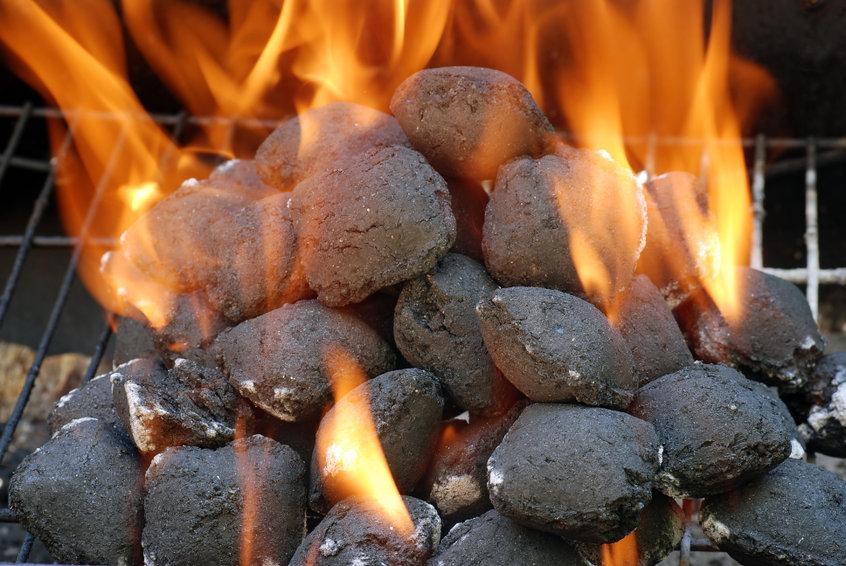
Proper storage is essential for maintaining the quality and effectiveness of charcoal.
Proper conditions prevent moisture absorption and protect against contaminants, ensuring that charcoal remains ready for use.
Ideal Storage Conditions
Storing charcoal in the right environment is crucial for its longevity.
The ideal storage area should be cool and dry, with temperatures ranging between 50°F and 80°F.
High humidity can lead to moisture absorption, which renders charcoal unusable.
It’s recommended to store charcoal off the ground, ideally on shelves or in bins, to avoid moisture from the floor. Use a sealed container to shield it from environmental elements.
Avoid areas that experience temperature fluctuations, like garages or basements, to maintain consistent conditions.
Storage Solutions and Tips
When it comes to storing charcoal, choosing the right container is vital.
Plastic bins with tight-fitting lids or metal containers can effectively keep charcoal dry.
Avoid cardboard boxes, as they can be prone to moisture and pest damage.
Organizing charcoal by type—such as lump charcoal and briquettes—can streamline access.
Label containers to easily identify the contents.
If charcoal is opened, make sure to reseal it tightly after use to prevent air and moisture from entering.
Additionally, consider using desiccants in storage containers to absorb excess moisture.
This proactive measure will help keep charcoal in optimal condition for grilling or cooking.
Avoiding Contaminants
Contaminants can compromise the quality of charcoal.
It is important to keep charcoal away from chemicals, such as lighter fluid or cleaning products, which could seep into the charcoal and affect its burning properties.
Store charcoal away from direct sunlight to prevent deterioration and avoid contamination from pest activities.
If storing near other fuels or substances, ensure a safe distance to prevent any potential chemical reactions.
Regularly check storage areas for signs of pests or dampness, addressing any issues immediately to maintain the integrity of the charcoal.
Recognizing and Handling Wet Charcoal
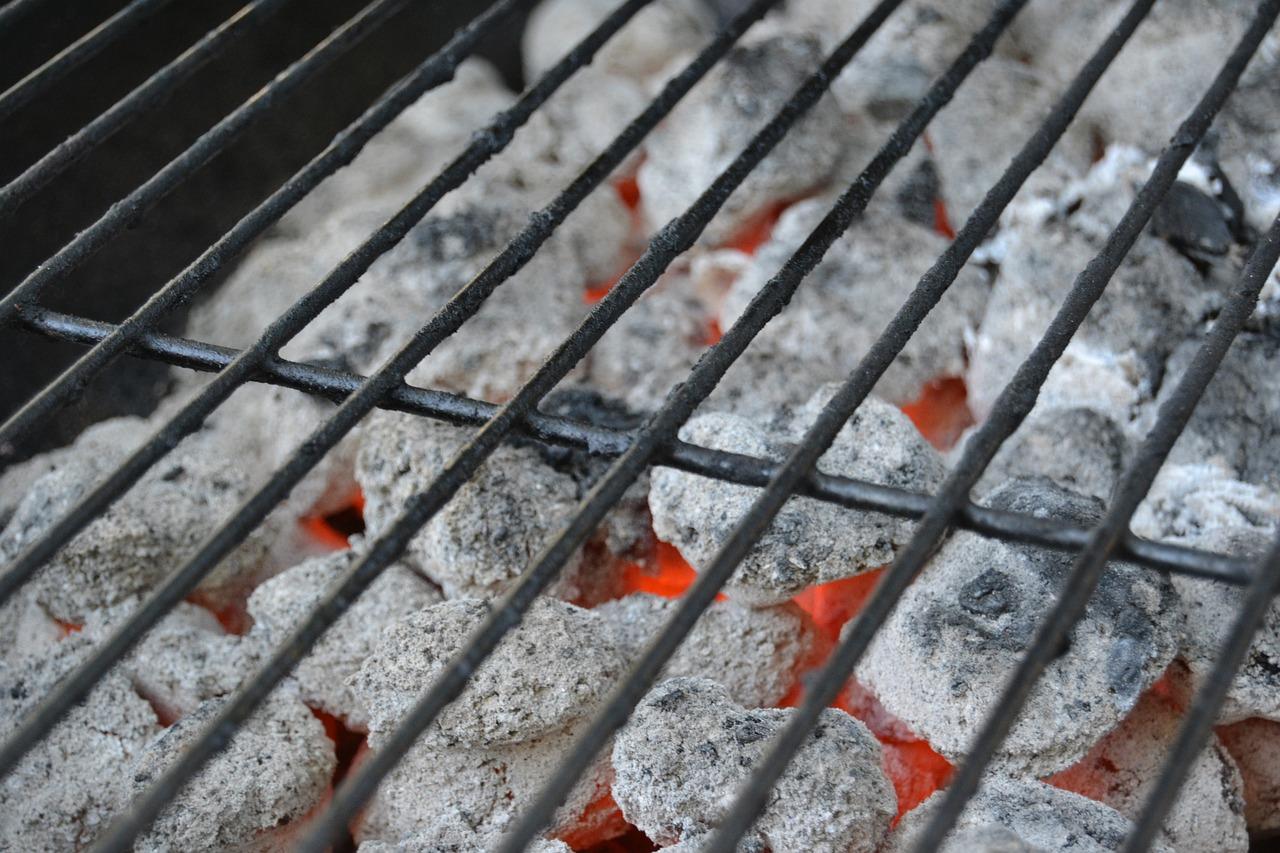
Wet charcoal can significantly affect grilling performance and flavor. Identifying moisture damage is essential for maintaining effective grilling practices.
Different methods can determine the feasibility of saving wet charcoal.
Signs of Moisture Damage
Moisture can compromise charcoal in various ways.
The following signs indicate that charcoal has been exposed to humidity:
- Appearance: Damp pieces may appear discolored or have a darker, almost swollen look.
- Texture: Wet charcoal feels noticeably softer or crumbly compared to dry pieces.
- Smell: A musty odor or unusual scent may emanate from moisture-affected charcoal.
- Sound: When shaken, wet charcoal emits a dull thud rather than a crisp sound, indicating excess moisture.
If the charcoal exhibits these signs, it may not perform optimally during grilling.
Can Wet Charcoal Be Saved?
Wet charcoal can occasionally be salvaged with careful handling.
Here are some crucial steps to consider:
- Drying: Lay the wet pieces in a dry area with good airflow. Exposure to sunlight can expedite the drying process.
- Heat: Use a low-heat source, like a grill, to help evaporate moisture. Ensure that the heat source is not too intense to avoid combustion.
- Testing: Once dry, test the charcoal by igniting a small amount. If it lights easily and burns evenly, it can still be used.
If charcoal remains clumpy or does not ignite properly, replacing it may be the best option to ensure a quality grilling experience.
Maximizing Charcoal Usage
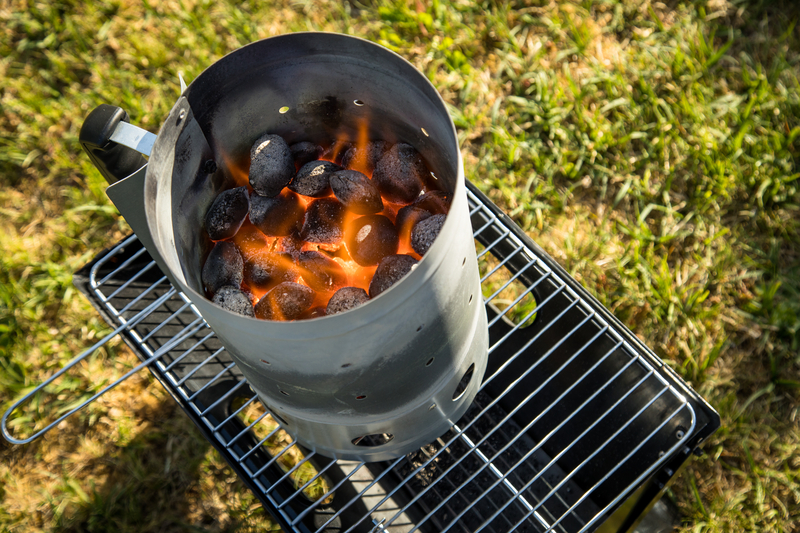
To get the most out of charcoal, it is essential to optimize burn time and enhance the grilling experience.
Focusing on the quality of charcoal and proper techniques can lead to better outcomes during grilling sessions.
Optimizing Burn Time
To extend burn time, selecting high-quality charcoal is vital.
Lump charcoal often burns hotter and faster than briquettes but can offer a shorter duration.
Charcoal briquettes are generally denser and provide a steady, consistent heat.
Using a charcoal chimney starter can help ignite the charcoal more efficiently, minimizing the time it takes to reach the ideal cooking temperature.
It’s beneficial to arrange the charcoal in a two-zone setup, where one side is hotter for searing, and the other side is cooler for indirect cooking.
This technique not only optimizes fuel usage but also allows for a variety of cooking methods at the same time.
Enhancing the Grilling Experience
Improving the grilling experience involves managing airflow and temperature control.
Adding more oxygen increases flame intensity, allowing for better cooking results.
Using tools such as a grill thermometer can ensure precise temperature management, which is essential for different types of food.
Additionally, incorporating flavor enhancers like wood chips can elevate the dish’s taste profile.
Soaking these chips in water before using them allows for prolonged smoking and richer flavors.
Being attentive to the grilling process and adjusting the setup as needed will ultimately enhance the overall experience while optimizing charcoal usage.
Bottom Line – Does Charcoal Expire?
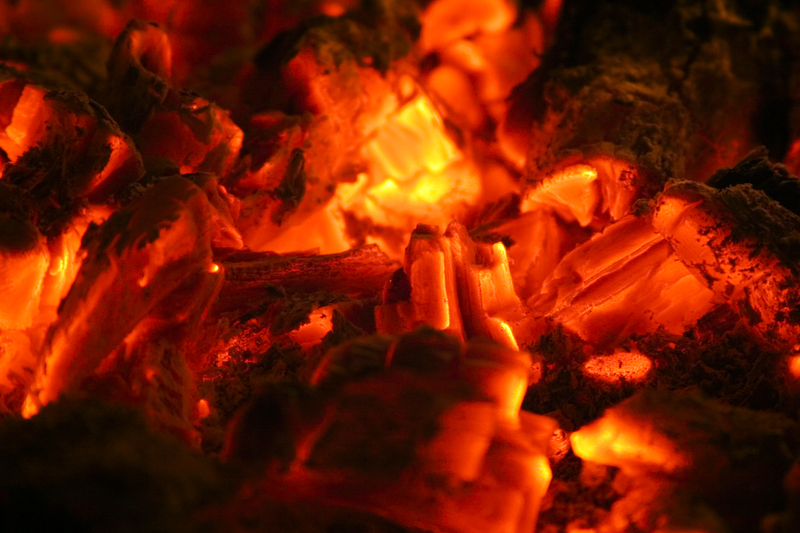
Charcoal does not expire in the traditional sense, but its quality can deteriorate over time.
When stored properly, it can maintain its effectiveness for years.
Proper storage plays a crucial role in preserving charcoal quality.
Charcoal should be kept in a dry, cool place, away from moisture. Using airtight containers can help prevent the absorption of humidity.
A decline in quality may affect the grilling experience.
If charcoal becomes moist or begins to crumble, it won’t ignite as well or produce consistent heat.
In summary, while charcoal can last indefinitely, taking care of its storage conditions ensures optimal performance during grilling.
